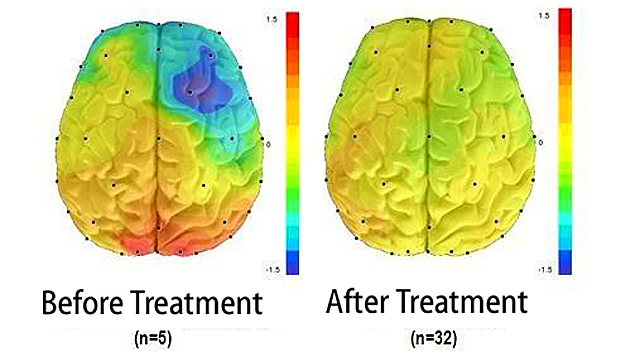qEEG functions by placing small sensors on the head to record brain signals. These electrodes detect electrical impulses produced by nerve cells, the cells in the brain that interact with one another. The data collected is then analyzed and presented as a series of waveforms. Each type of neural wave—such as alpha, beta, delta, and theta—relates to various mental states and activities. For instance, α waves are often linked with relaxation, while beta oscillations are associated to active cognition and issue resolution. By examining these patterns, clinicians can detect irregularities that may suggest mental health issues.

One of the major benefits of qEEG is its ability to provide objective information. In contrast to traditional assessments that rely on subjective accounts from clients, qEEG provides a clear picture of neural activity. This clarity can help reduce biases in assessment and lead to more precise treatment plans. For instance, if a patient is facing anxiety, qEEG can show specific patterns of brain activity that are linked with anxiety disorders. This information allows mental health professionals to tailor treatments more efficiently, whether it be through counseling, pharmaceuticals, or other approaches.
Additionally, qEEG can be especially beneficial in tracking intervention advancement. By performing qEEG assessments at different stages during treatment, clinicians can track changes in brain activity over time. This continuous assessment helps ascertain whether a treatment is working or if modifications are needed. For example, if a patient is not responding to a particular medication, qEEG may show that their brain activity has not changed in a manner that suggests improvement. This feedback loop can lead to more customized and effective mental health care.
In conclusion, qEEG brain mapping is a powerful tool in the field of mental health assessment. By providing objective data about brain function, it improves the understanding of different psychological health disorders. This method not only assists in precise assessment but also helps in monitoring treatment effectiveness. As mental health professionals continue to explore the capabilities Get More Info of qEEG, it possesses potential for enhancing the well-being of people dealing with psychological health issues. With continuous research and advancements in technology, the mysteries of the mind may become more apparent, resulting to better results for those in need of support.